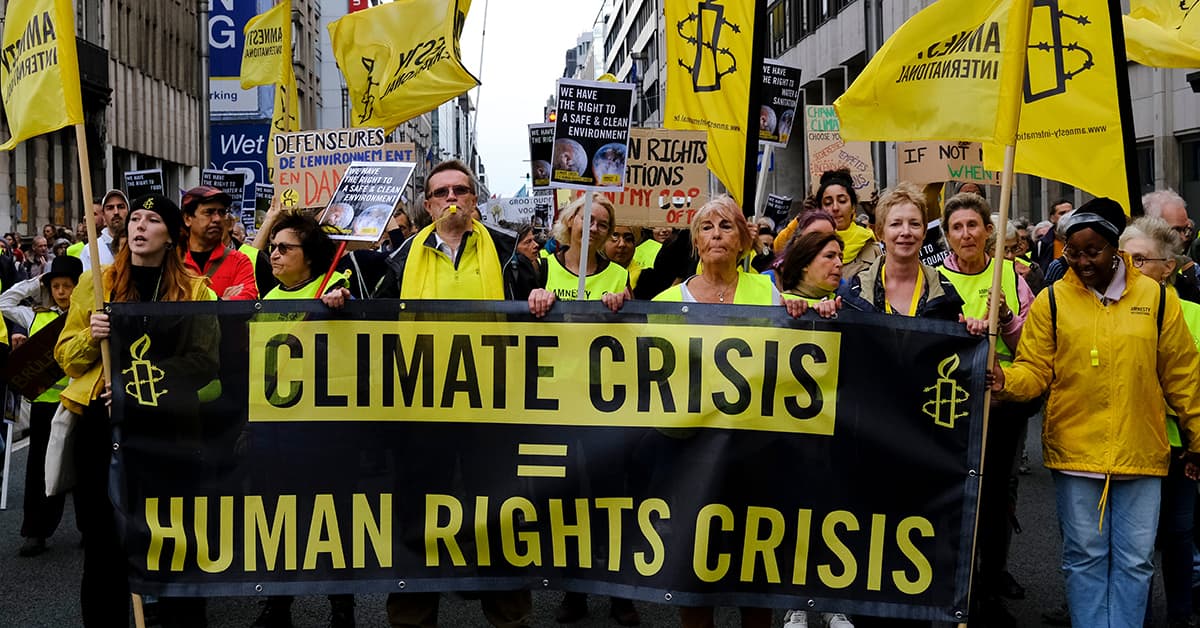The newest carbon-credit initiative out of COP27 doesn’t seem to answer the old critiques.

As US climate envoy and former Secretary of State John Kerry was presenting his government’s carbon credit initiative on Wednesday at COP27 in Egypt, he was heckled by an activist shouting, “John Kerry, you are promoting false solutions, you are working with polluters.”
Kerry replied that the initiative he was presenting—to funnel more than $100 billion into cutting carbon emissions from private firms—did not include fossil fuel companies. But the problem is deeper than that. Carbon credits are a license to pollute that companies can sell and hence do not reduce carbon pollution.
Like most carbon-credit proposals, the initiative Kerry was touting—designed by the Bezos Earth Fund and the Rockefeller Foundation in partnership with pollution-generators such as PepsiCo and Microsoft—aims to create a marketable instrument that a jurisdiction could approve based on carbon reductions. These credits, the consortium notes in a joint statement, “could then be purchased by companies…which would create a predictable finance stream to de-risk and leverage other forms of finance.”
It is not only radical activists who critique the initiative: Even the Washington Post (owned by the same Jeff Bezos) remarked on its lack of details. A German minister said that the trading credits can be a useful tool, but that there is the risk that such ideas will replace and not add to the efforts already presented by governments.
One hurdle to reaching agreement among different states on carbon emission cuts is the wide differences in pollution contribution. The US puts out roughly 15 tons of carbon per capita each year, while Uganda emits just 0.2. But—because US plants are already in place and the US is more powerful—these are often accepted as unavoidable while international banks are more restrictive in financing new plants for poorer countries, effectively punishing them for not industrializing earlier.
“We must do better. We need to penalize large emitters rather than grandfathering them. At the same time, we need to give countries like Uganda the incentive as well as resources to grow green,” Raghuram Rajan, a professor of finance at the Chicago Business School and former Indian central banker, has said.
Rajan offers a different road map to a global carbon incentive to distribute emissions rights fairly while also including incentives to reduce: “Let every country that emits more than the global average of around five tons per capita pay annually into a global fund. The amount paid would be the excess emissions per capita multiplied by the population and further multiplied by a dollar amount called the Global Carbon Incentive (GCI). If the GCI started at $10 per ton, the US would pay around $33 billion each year. Meanwhile, countries below the global average would receive a commensurate payout based on how much they emit below the average. Uganda, for example, would receive around $2 billion.” According to Rajan: “The scheme is simple and self-financing. Low emitters— often the poorest countries and the ones most vulnerable to climatic changes they did not cause—would receive a payment that could help their people adapt. Conversely, the responsibility for payments would appropriately lie with big rich emitters, who are also in the best position to pay.”
A good—although still limited—initiative is the EU ETS market based on the cap-and-trade principle. Once a cap is set on the total amount of certain greenhouse gases that can be emitted by the installations covered, there is the possibility to buy or sell emission allowances. The cap will be reduced over time so that total emission levels fall.
China—which approved with some fanfare a similar market last year saying it will be larger than the European counterpart—has yet to limit emission rights, making them still untradable.



